What is Kufic Script?
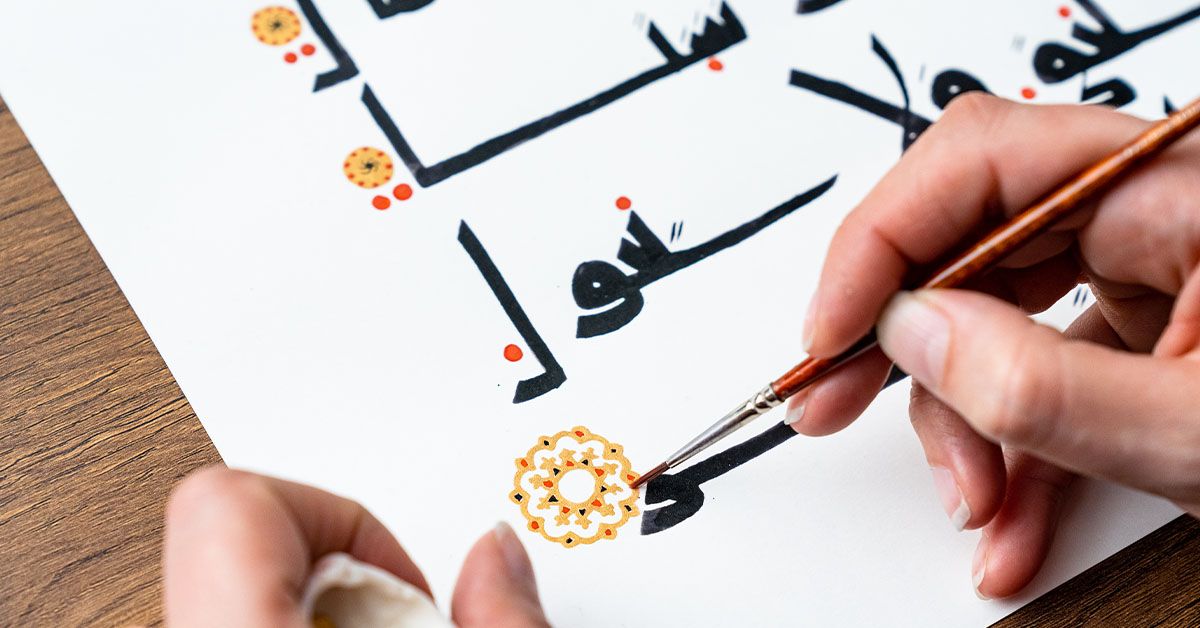
Discover the origins and characteristics of this ancient Arabic style of calligraphy that first appeared around the ninth century
Calligraphy is an artistic means of transmitting a text, filled with beauty and mystery. The word calligraphy comes from the Greek words kallos, meaning beauty, and graphein, which means writing. It’s a tradition in many cultures around the world and has always been a key feature in Islamic art.
In this blog post, Domestika teacher Joumana Medlej (@majnouna) shows you how to make the basic shapes you’ll need to build letters and words. You'll also learn about the origins and characteristics of this ancient Arabic style of calligraphy, which was first developed to ensure consistency in letterform when reproducing the Qur'an. Today, it is also used to create contemporary works of art.
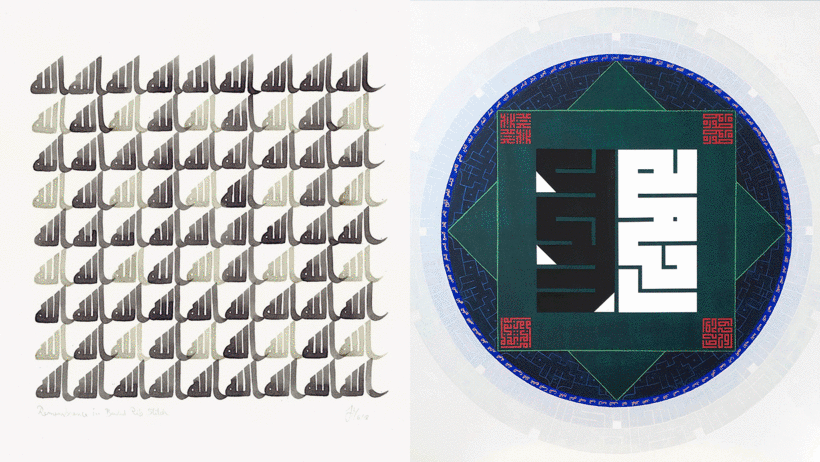
Joumana Medlej is an artist specializing in Kufic script. She works to keep this lost art alive, taking inspiration from the Cosmos, the Earth, and her inner voice to breathe new life into this ancient practice. Joumana studied graphic design in Beirut before working in illustration, layout design, game design, and comic books!
In 2007, her career took an unexpected turn when a calligraphy master in Lebanon invited her to go and work for him. She worked in his studio, soaking up everything around her and learning through practice and observation as opposed to formal training. When Joumana discovered Kufic script and began merging it with her own visual language, she had discovered the art form that would become her specialty.
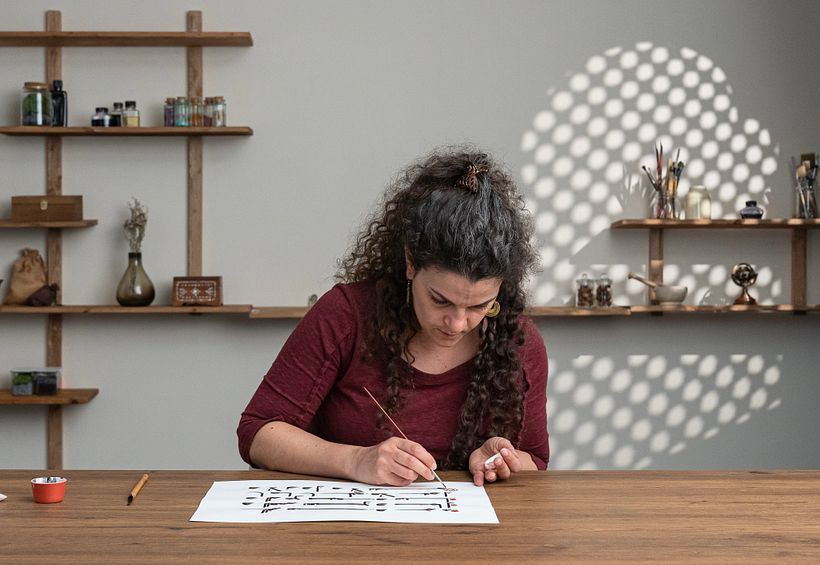
Later, she moved to London and decided to focus entirely on her Kufic script-inspired art. “It was hard in the beginning. It was not easy to start from nothing in a new place. I was living and working in a very small room. There were times when I thought, ‘This artist thing is not working. I’m going to have to get a job.’ But I didn’t have to. Step by step, persevering, learning from my experiences, I got to a point where I could make a sustainable living", she recalls.
Eventually, Joumana was able to get her own studio and is now an expert in Kufic script – aside from continuing to make her own contemporary art, she teaches and has written handbooks on the subject.
The Arabic writing system
Arabic does not have an alphabet; it has an abjad. An abjad is a writing system that is only made up of consonants and, in the case of the Arabic abjad, three long vowels.
It is not considered necessary to illustrate short vowels, however, some choose to do so with dots, dashes, and curves. Arabic and Hebrew are the most common examples of languages that use abjads and are both written from right to left.
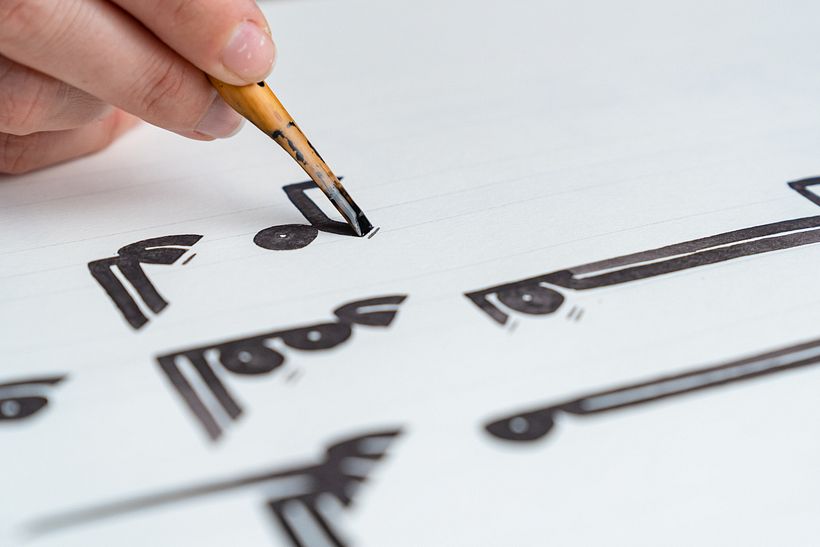
What is Kufic script
Centuries ago, concern arose regarding the altering of letterforms each time the Qur'an was reproduced, and how this could affect the way readers interpreted it. In response, a style of calligraphy was created that would ensure consistency when reproducing early copies of the sacred scripture of Islam: it was called Kufic script.
It is believed that Kufic script first appeared around the ninth century, although it's possible that it was used even earlier. It was developed in the Iraqi city of Kufa, from which its name is derived, which was an important center for calligraphy during the Islamic Golden Age.
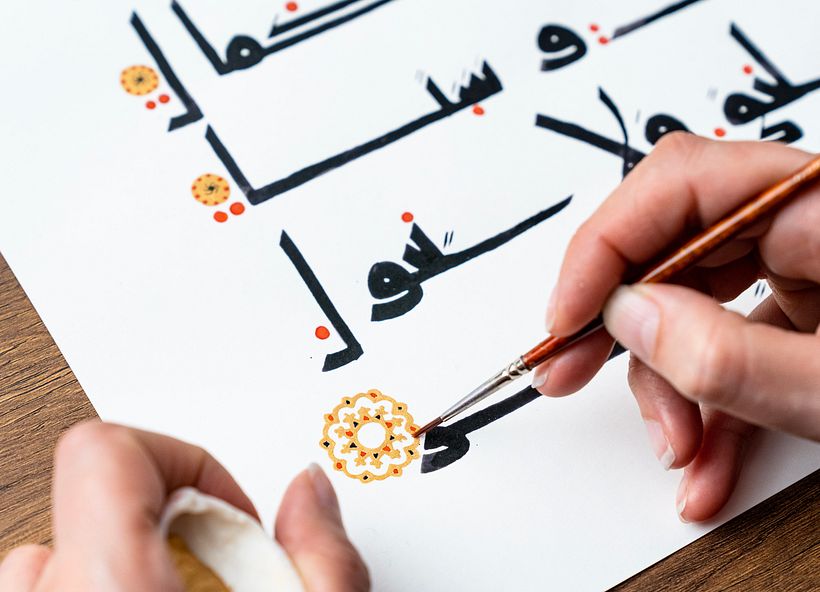
What are the characteristics of Kufic script?
Kufic script is characterized by its angular, rectilinear letterforms and its horizontal orientation. There are many different versions, such as square Kufic, floriated Kufic, and knotted Kufic. “Kufic script was the first Arabic script to consciously be made beautiful,” says Joumana. “It gives the page a majestic stillness and nourishes the soul with meaning and beauty”.
There are five basic shapes that you will need to master to write in Kufic script, they are:
Vertical Stroke
Pulling your pen downwards, you can create a straight vertical stroke. This shape can be used in a longer or shorter version, depending on the characters you combine it with.
Horizontal Stroke
Pull your pen from left to right to create a horizontal stroke.
Oblique Stroke
Pull your pen down at an angle so that it gently curves, ending in a horizontal stroke that sits above the line of your paper.
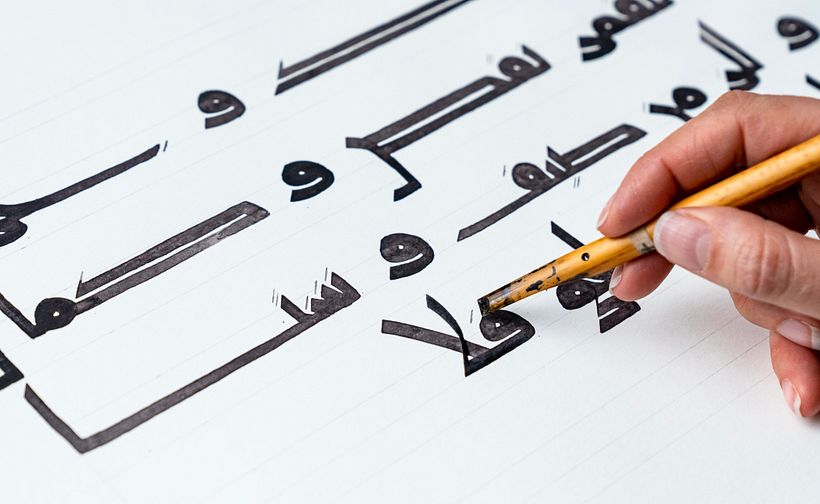
Circle
Use two strokes to form your circle, almost as if you were drawing rounded parentheses pushed together. You can then add ink to the places where they join to make the transition look smoother.
Returning Tail
Create a line that looks like a tilde (~), then from the left side extend it into a downward curve.
A meditative practice
“This calligraphic practice slows down the body and calms the mind as all our attention is engaged in shaping beautiful letters,” says Joumana, who not only uses the practice to write inspiring messages but also to create contemporary art.
In the video tutorial below, Joumana will show you how to unwind and make the basic shapes you’ll need to build letters and words. She also shares tips for how to warm up your hand and shares advice on how to avoid common mistakes.
Read this article to find out how lettering, calligraphy, and typography differ. And if you’re interested in learning how to write an inspiring short message in Kufic script, presented in a traditional layout and complete with decorative markings, sign up for Joumana Medlej’s Domestika course, Arabic Calligraphy: Learn Kufic Script.
You may also like:
- Lettering, Calligraphy, and Typography: Do You Know the Differences?
- Why Is Calligraphy So Good for Your Brain?
- Japanese Calligraphy Tutorial: 4 Basic Lines for Beginners
-Shodo: Introduction to Japanese Calligraphy, a course by RIE TAKEDA
-Uncial Calligraphy for Beginners, a course by Joaquín Seguí




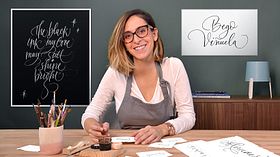

0 comments